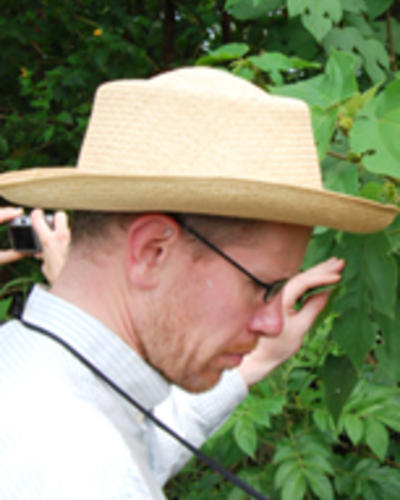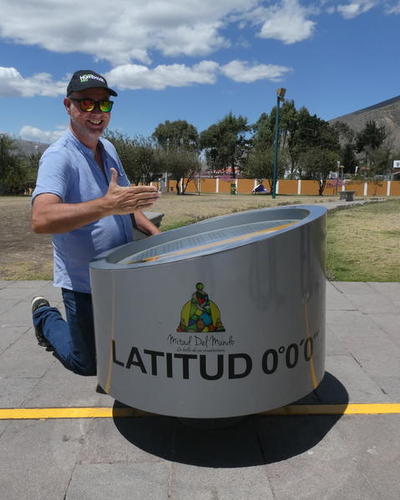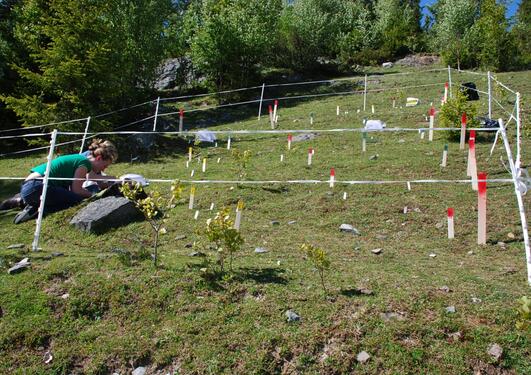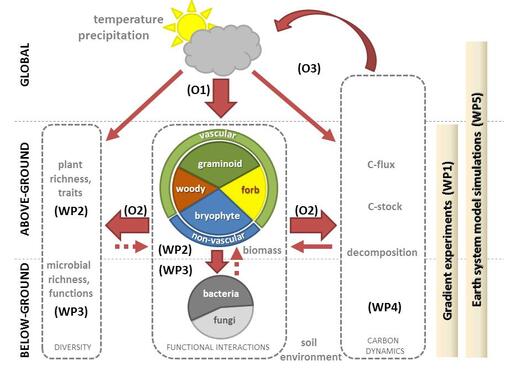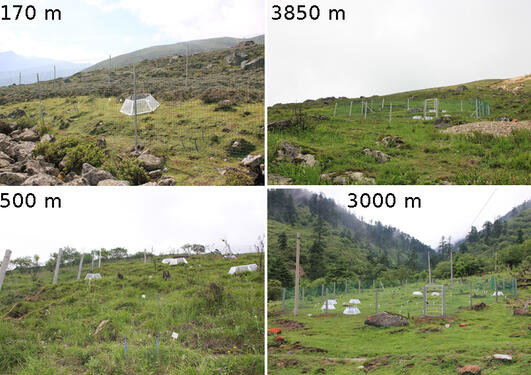Biodiversity uphill
Using elevation gradients to determine patterns of species richness

Hovedinnhold
John-Arvid Grytnes, John Birks, Vigdis Vandvik, Richard Telford, Ole Reidar Vetaas (Department of Geography), Krishna Shrestha, Joachim Töpper (NINA)
Projects using elevational data are being undertaken in Nepal and Norway. The Endemic project used data from floras from many parts of the world to see how patterns of endemism vary.
We use elevational gradients to conduct climate change experiments by transplanting whole ecosystems (turfs) and species from cold and dry climates towards warmer and wetter climates, matching the climate change projections for the future. This allows us to investigate how individuals, populations, communities and ecosystems respond to climate change, and to explore the underlying ecological processes. We have recently started a collaborative project with the Institute for Mountain Hazards and Environment in the Gongga mountains in China, using the same methods to allow comparison across elevations.



